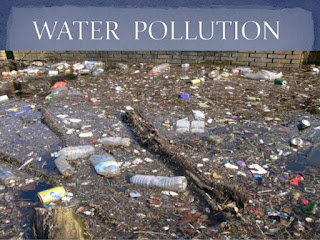Indoor Air Environmental Pollution :Asbestos Associated With Lung Cancer And Mesothelioma
Indoor Air Pollution - Asbestos: "Asbestos is a mineral rock mined in much the same way as other minerals, such as iron, lead or copper. It exhibits substantial resistance to heat and deterioration and thus has historically been used for a variety of commercial and industrial purposes. Instead of forming dust particles when crushed, asbestos divides into millions of fine fibers in the manufacturing process. Asbestos fibers can have serious effects on your health if inhaled. There is no known safe exposure, so the greater the exposure, the greater the risk of developing an asbestos-related disease. The amount of time between exposure and the first signs of disease can be as much as 30 years.
Asbestos can cause asbestosis, a scarring of the lungs that leads to breathing problems and heart failure. Workers who manufacture or use asbestos products and have high exposures to asbestos are often affected with asbestosis. Inhalation of asbestos can also cause lung cancer and mesothelioma, a rare cancer of the linings of the chest and abdomen. Tobacco smoke acts in a synergistic manner with asbestos exposure to increase the chance of developing lung cancer. Asbestos may also be linked to cancer of the stomach, intestines, and rectum.
Asbestos had been used in construction over many decades. Until the 1970s the building industry used asbestos in such building materials as thermal system insulation, acoustic insulation, floor and ceiling tiles, miscellaneous materials (floor coverings, counter tops, and siding), and shingles. It was also formerly used in such consumer products as fireplace gloves, ironing board covers, and certain hair dryers.
Friable asbestos has been found in about 20% of public buildings. This, coupled with the discovery of environmental asbestos fibers and asbestos bodies during autopsies, has heightened anxiety about asbestos exposure in buildings. Since asbestosis results from high levels of exposure, it is only a minor concern to most building occupants. The major concern is mesothelioma, which occurs after exposure to lower levels of asbestos, levels typical of household and neighborhood exposure.
Removal of asbestos is not always the best choice to reduce exposure. The EPA requires asbestos removal only in order to prevent significant public exposure and generally recommends an in-place management program when asbestos has been discovered and is in good condition. In this situation, steps that can be taken to reduce exposure to asbestos include:
Leaving undamaged asbestos material alone if it is not likely to be disturbed.
Using trained and qualified contractors for control measures that may disturb asbestos and for cleanup.
Following proper procedures in replacing wood stove door gaskets that may contain asbestos."
'via Blog this'
Asbestos can cause asbestosis, a scarring of the lungs that leads to breathing problems and heart failure. Workers who manufacture or use asbestos products and have high exposures to asbestos are often affected with asbestosis. Inhalation of asbestos can also cause lung cancer and mesothelioma, a rare cancer of the linings of the chest and abdomen. Tobacco smoke acts in a synergistic manner with asbestos exposure to increase the chance of developing lung cancer. Asbestos may also be linked to cancer of the stomach, intestines, and rectum.
Asbestos had been used in construction over many decades. Until the 1970s the building industry used asbestos in such building materials as thermal system insulation, acoustic insulation, floor and ceiling tiles, miscellaneous materials (floor coverings, counter tops, and siding), and shingles. It was also formerly used in such consumer products as fireplace gloves, ironing board covers, and certain hair dryers.
Friable asbestos has been found in about 20% of public buildings. This, coupled with the discovery of environmental asbestos fibers and asbestos bodies during autopsies, has heightened anxiety about asbestos exposure in buildings. Since asbestosis results from high levels of exposure, it is only a minor concern to most building occupants. The major concern is mesothelioma, which occurs after exposure to lower levels of asbestos, levels typical of household and neighborhood exposure.
Removal of asbestos is not always the best choice to reduce exposure. The EPA requires asbestos removal only in order to prevent significant public exposure and generally recommends an in-place management program when asbestos has been discovered and is in good condition. In this situation, steps that can be taken to reduce exposure to asbestos include:
Leaving undamaged asbestos material alone if it is not likely to be disturbed.
Using trained and qualified contractors for control measures that may disturb asbestos and for cleanup.
Following proper procedures in replacing wood stove door gaskets that may contain asbestos."
'via Blog this'



Nice post mate, keep up the great work, just shared this with my friendz GPW Law
ReplyDeleteThis is a great inspiring article.I am pretty much pleased with your good work.You put really very helpful information... Visit Us
ReplyDeleteI can set up my new idea from this post. It gives in depth information. Thanks for this valuable information for all,.. gpwlaw-mi.com/ohio-mesothelioma-lawyer/
ReplyDeletethanks for the tips and information..i really appreciate it.. https://www.youtube.com/watch?v=gsYd-XGZlqU
ReplyDeleteImpressive web site, Distinguished feedback that I can tackle. Im moving forward and may apply to my current job as a pet sitter, which is very enjoyable, but I need to additional expand. Regards. https://asbestoscancer.org/stage-three-mesothelioma/
ReplyDeleteThis is such a great resource that you are providing and you give it away for free. Michigan asbestos law firm
ReplyDelete